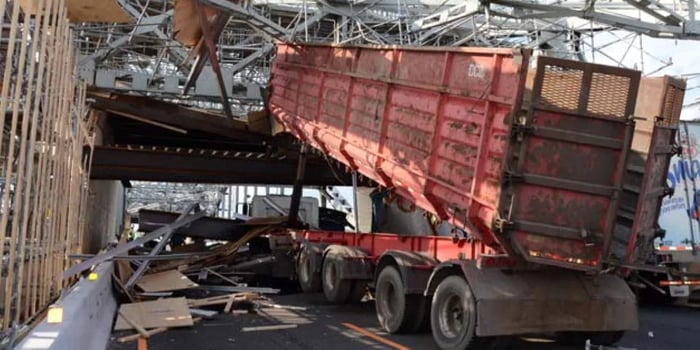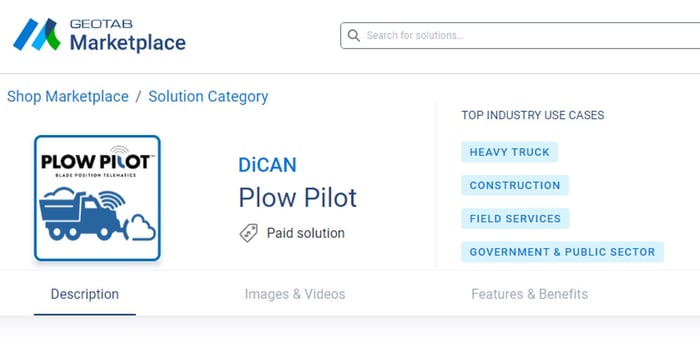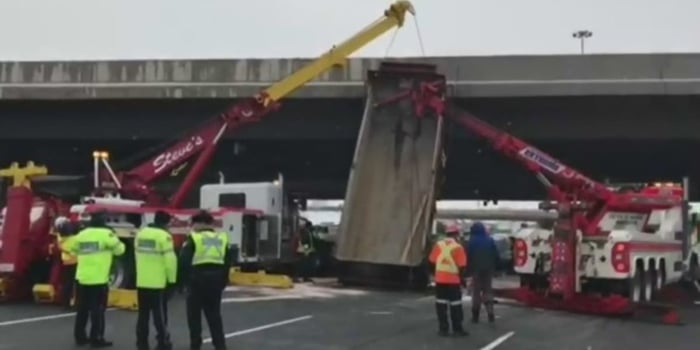
Table of Contents
Changes Are Coming
British Columbia is enhancing road safety through significant amendments to the Motor Vehicle Act Regulations (MVAR), effective June 1, 2024. These changes, particularly the mandatory installation of in-cab warning devices in dump-style vehicles, are crucial for preventing infrastructure damage, and to enhance road safety.
Provincial data indicates that since 2021, there have been 30 incidents of overpass accidents on BC highways. Notably, 16 of these occurred in the last year alone. For fleet managers, adapting to these regulations is not just about compliance, but also about prioritizing safety. This article aims to guide fleet managers through the upcoming changes and provide practical tips on ensuring their fleet vehicles meet the new safety standards.
Understanding the New Regulations
Here are the key points fleet managers need to understand about the new regulations:
-
In-Cab Warning Devices Mandatory by June 1, 2024: Dump-style vehicles must be equipped with in-cab warning devices. These devices alert drivers if the dump box is raised while the vehicle is in motion, addressing the risk of over-height vehicles hitting overpasses. Failure to comply with this requirement will result in a fine of $598.
-
Increased Fines for Over-Height Vehicle Violations: The fines for over-height vehicle-related offenses have been increased to $575, the highest of its kind in Canada. This hike in fines emphasizes the importance the government is placing on adherence to safety regulations.
-
Stricter Penalties for Repeat Offenses: Trucking companies involved in infrastructure crashes will face escalating consequences for repeat offenses. This could include suspension or cancellation of the company’s carrier safety certificate, essentially barring them from operating in B.C. Immediate fleet suspensions imposed during investigations and significant operational costs are now permanent enforcement tools.
-
Speed Limiter Regulations: By April 5, 2024, heavy commercial vehicles must have speed-limiting systems activated, programmed to prevent these vehicles from traveling more than 105 km/h on B.C. highways. Non-compliance will result in a fine of $295 and three driver penalty points.
Commercial Vehicle Safety & Enforcement Bulletin
These regulatory changes aim to hold carriers and drivers accountable for the safe and professional movement of goods on provincial roads and highways. They underscore a commitment to risk prevention in the trucking industry and focus on reducing incidents that can significantly impact commuters, businesses, and the economy. By implementing these regulations, B.C. aims to ensure safer roadways for travellers and commercial vehicles alike.
As we delve into the practical aspects of adapting to the new regulations, we've put together 4 tips to help fleet managers effectively prepare for and navigate these changes. This section will provide actionable advice and strategies to ensure your fleet remains compliant, safe, and efficient in light of British Columbia's updated MVAR standards.
Tip 1: Understand How the Regulatory Changes Impact Your Organization
Familiarize Yourself with the Regulatory Changes: The first step is to thoroughly understand the regulatory changes. This includes knowing the specifics of the new in-cab warning device and speed-limiting system requirement requirements for dump body vehicles, the increased fines for over-height vehicle violations, and the escalating nature of penalties on repeat offenders. By reading this article you're already on the right track to gaining this essential knowledge. More research can be done at the Government of BC Website: Driving and Transportation.
Be Aware of the Penalties: Transportation Minister Rob Fleming emphasized the stringent measures being implemented by British Columbia to address non-compliance with the new regulations. Minister Fleming also noted the province’s recent actions in imposing severe penalties, citing an instance where a company’s entire fleet was suspended pending an investigation into an infrastructure crash involving one of its trucks. It should be noted that these investigations can last weeks, or even months. "There simply is no excuse for a truck to crash into a bridge or an overpass" he stated. These remarks clearly indicate the government's firm stance on enhancing road safety and holding violators accountable.
Tip 2: Evaluate and Upgrade Your Fleet's Safety Equipment
Step 1: Assess Current Fleet Safety Equipment and Conduct a Fleet Safety Audit: Assess each vehicle in your fleet against the new regulations to identify compliance gaps. This should cover all aspects of the new regulations, including equipment for over-height vehicle detection and speed-limiting systems. A detailed fleet safety audit is crucial in this process. It helps in identifying areas needing improvement and ensuring that every vehicle aligns with the updated safety standards. Access our comprehensive sample fleet safety audit report guide to get a start on conducting an effective fleet safety audit. Feel free to make it your own.
Step 2: Integrate Safety Solutions: After identifying the needs of your fleet, the next step is to integrate suitable safety solutions. To meet the new standards, integrating advanced safety solutions like DiCAN's Good to Go™ box up alarm is recommended. This device is specifically designed to comply with the new MVAR overhead warning regulations. It alerts drivers when the vehicle’s box is raised, significantly reducing the risk of an accident, a primary concern addressed by the new regulations. Secondly, it ensures your fleet is compliant with the legal requirements, thus avoiding potential fines and legal complications.
Remember, the goal is to reduce the risk of accidents and ensure compliance with legal requirements. Upgrading your fleet with the right safety equipment not only adheres to the new MVAR changes but also promotes a culture of safety within your organization.
Tip 3: Educate and Train Your Fleet Operators
Importance of Training on New Regulations: With the introduction of stringent measures to prevent trucks from crashing into highway infrastructure, it’s vital to train drivers and fleet operators on the new regulations. This training should encompass understanding and adhering to speed-limiter regulations, the use of in-cab warning devices, and the implications of non-compliance, such as increased fines and potential fleet suspensions.
Implementing Training Programs: Develop, or ensure that existing training programs cover the specifics of the new regulations and practical guidance on using safety equipment like box up alarms. B.C. has introduced mandatory entry-level training (MELT) for new Class 1 commercial driver’s license applicants, which can serve as a model for developing your training modules. Ensure that these programs are thorough, easily accessible, and regularly updated to reflect any changes in regulations or best practices. DiCAN’s Good to Go box up alarm is designed for easy integration and minimal training requirements, making it a user-friendly option for enhancing fleet safety in compliance with new standards.
By focusing on education and training, fleet managers can ensure that their operators are well-prepared to navigate these changes safely and efficiently, thereby contributing to safer highways in B.C..
Tip 4: Leverage Telematics and Data Analytics
For effective compliance with the new BC MVAR regulations, incorporating telematics and data analytics is key. This technology can significantly aid in monitoring compliance, improving operational efficiency, and aiding decision-making.
Monitoring Compliance: Utilize telematics systems like Geotab to monitor the status of safety equipment such as the Good to Go™ box up alarm. This integration ensures real-time and historical reporting on the positioning of extendable components of your vehicles, crucial for preventing over-height accidents.
Operational Efficiency: Geotab’s telematics platform provides a range of insights that are crucial for fleet management. For instance, it can track vehicle usage patterns, identify frequent routes, and monitor fuel efficiency. This data can help in scheduling maintenance more effectively, thereby reducing downtime and prolonging vehicle life.
An example of its robust data analysis capability is its ability to provide detailed reports on driver behavior, such as speeding, harsh braking, or idling times. These insights enable fleet managers to implement targeted training programs, promoting safer driving habits and reducing the risk of accidents. Additionally, the integration with systems like Good to Go™ box up alarm can provide alerts on specific safety compliance issues, such as the raised box of a dump truck, directly to the fleet manager's dashboard.
Be Ready, Early.
Ensuring compliance with British Columbia's new regulations is vital for fleet safety. By effectively evaluating your fleet's safety equipment, providing comprehensive training to your operators, and harnessing the power of telematics and data analytics, you can maintain high standards of safety and efficiency. For additional support and information in aligning with these regulatory changes, consider reaching out to DiCAN. Our dedicated team is ready to assist you with the right tools and expertise to seamlessly adapt to these new requirements.






